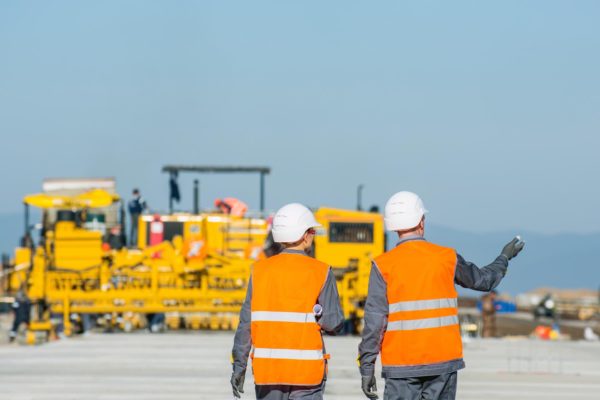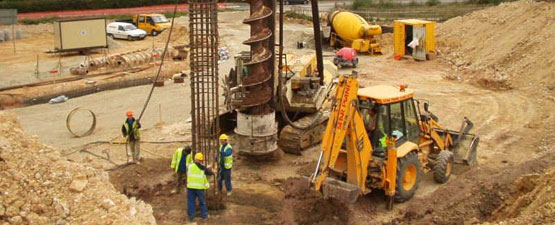Top Geotechnical Engineers for Cutting-Edge Soil Evaluation and Foundation Design
Wiki Article
The Value of Dirt Evaluation and Website Investigation in the Geotechnical Industry: Ensuring Security and Stability in Civil Engineering
In the geotechnical industry, soil evaluation and website examination are foundational aspects that underpin the security and security of civil engineering jobs. By thoroughly comprehending dirt homes, designers can preemptively deal with potential challenges, inevitably guarding structural stability.Comprehending Soil Qualities
In the world of geotechnical engineering, an extensive understanding of soil residential properties is extremely important for educated decision-making and efficient task design. The characterization of dirt entails the evaluation of different physical and mechanical residential properties, such as grain dimension distribution, plasticity, leaks in the structure, shear, and communication strength. These buildings determine how dirt acts under different loading conditions and environmental influences, making them critical for evaluating site suitability for building tasks.Soil classification systems, such as the Unified Soil Category System (USCS) and the AASHTO classification, supply structures for organizing dirts based upon their features. This category aids designers in anticipating habits under tension, water flow, and settlement, therefore influencing design selections and construction techniques.
In addition, the interaction in between dirt and bordering structures is an essential factor to consider in geotechnical engineering. Recognizing soil residential or commercial properties aids recognize possible obstacles, such as liquefaction in earthquake-prone locations or excessive settlement in soft dirts. By extensively assessing these residential or commercial properties, geotechnical designers can ensure the safety, stability, and long life of frameworks, inevitably adding to the total durability of civil design projects.
Approaches of Dirt Evaluation

In-situ examinations consist of techniques such as Conventional Infiltration Tests (SPT), Cone Infiltration Examinations (CPT), and vane shear examinations. SPT examines the resistance of dirt to penetration, supplying data on density and stamina, while CPT measures dirt resistance and pore stress, producing continuous accounts of dirt stratigraphy. Vane shear examinations are especially helpful for evaluating the shear strength of natural soils.
Laboratory examinations complement these in-situ analyses and include tasting soil for regulated testing. Typical laboratory techniques include Atterberg limitations, which determine the plasticity attributes of fine-grained soils, and compaction tests, which examine moisture-density connections. Additional tests, such as triaxial compression and unconfined compression tests, are performed to examine the shear toughness of dirt samples under different conditions.
Function of Website Investigation
Site investigation plays a crucial duty in the geotechnical design procedure, acting as the foundation for comprehending subsurface problems. This extensive evaluation entails methodical exploration of dirt and rock residential properties, groundwater levels, and other geological attributes that affect task security and security.Commonly, site examinations encompass a range of techniques, consisting of drilling boreholes, tasting, and in-situ screening. These techniques provide critical information on the physical and mechanical attributes of the ground, educating designers concerning prospective challenges such as soil negotiation, birthing ability, and incline security.
In addition, website investigation helps with the recognition of hazardous materials and impurities, making it possible for the implementation of proper removal steps. By establishing a precise subsurface profile, website examinations help to mitigate dangers associated with building, making sure that projects abide by security standards and guidelines.
The findings from a thorough website examination not just overview style choices but additionally affect building approaches and timelines. In summary, the value of website investigation can not be overstated; it is a vital action in the geotechnical engineering process, laying the foundation for effective job execution while prioritizing public safety and security and environmental stability.
Effect On Project Style
A complete understanding of dirt characteristics dramatically influences project style in the geotechnical market. Dirt evaluation informs designers concerning the mechanical residential or commercial properties, composition, and actions of the ground, which are important consider determining the feasibility and safety of a building and construction task. Precise data on dirt leaks in the structure, strength, and compressibility enable for the development of efficient structure designs, making sure that frameworks are adequately supported and steady throughout their lifespan.Furthermore, the presence of contaminants or unstable dirt layers can prompt alterations in job design, such as picking alternate building and construction methods or products. This proactive useful content technique decreases threats connected to soil settlement, extreme loading, or lateral activity, therefore safeguarding both the honesty of the structure and public safety and security.
The integration of dirt analysis right into task style likewise promotes compliance with ecological factors to consider and regulatory demands. By dealing with soil-related challenges early in the style procedure, designers can maximize resource appropriation and minimize possible delays and costs connected with unpredicted website conditions. Inevitably, comprehensive dirt evaluation boosts the overall high quality and longevity of civil engineering projects, bring about more sustainable and durable facilities.
Study and Examples
Showing the critical role of soil analysis in the geotechnical industry, numerous study highlight its influence on project outcomes. One significant example is the building and construction of a skyscraper in downtown Los Angeles, where comprehensive soil screening disclosed unpredictable subsurface conditions. geo tech engineer. By identifying the existence of large clay, engineers had the ability to revamp the structure, integrating deep pilings that ensured security and safety and security, eventually preventing possible architectural failures
Lastly, a dam job in the Southeast faced hold-ups because of unexpected dirt disintegration concerns. In-depth dirt analysis allowed designers to carry out reliable stabilization techniques, guaranteeing that the dam met safety policies while adhering to the task timeline. These cases emphasize the requirement of thorough dirt analysis and website examination, highlighting their crucial function in achieving effective and risk-free civil engineering projects.
Final Thought
In conclusion, dirt evaluation and site investigation are basic elements of the geotechnical sector, playing an essential Your Domain Name function in making certain the safety and stability of civil engineering tasks. By supplying necessary data on soil homes and subsurface problems, these processes educate foundation style and building and construction methodologies. In addition, complete investigations add to danger identification and risk Our site mitigation, eventually boosting the durability and durability of frameworks while optimizing source allowance throughout the project lifecycle.In the geotechnical industry, dirt evaluation and site examination are fundamental elements that underpin the safety and security and security of civil engineering tasks. Comprehending dirt residential or commercial properties aids identify prospective difficulties, such as liquefaction in earthquake-prone locations or excessive negotiation in soft dirts. SPT assesses the resistance of dirt to penetration, offering information on thickness and toughness, while CPT determines dirt resistance and pore pressure, yielding continual accounts of dirt stratigraphy. These cases highlight the need of comprehensive dirt analysis and site investigation, highlighting their crucial duty in attaining risk-free and effective civil engineering tasks.
In verdict, soil analysis and site examination are fundamental components of the geotechnical industry, playing an important duty in ensuring the safety and stability of civil design tasks.
Report this wiki page